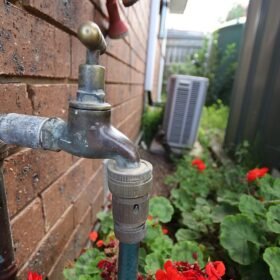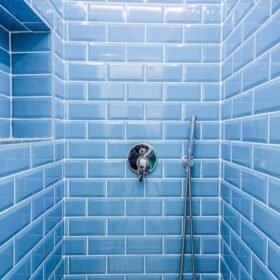Perhaps the most susceptible area of a house to flooding is the basement. It may flood for a variety of causes, including broken water heaters or washing machines, sump pump failure or overflow, and seepage through cracks.
Read more about the importance of proper drainage in your home.
With minimal work on your side, you may significantly lessen the probability of flooding in your basement. Simple maintenance tasks such as cleaning the gutters and repairing foundation cracks may help preserve your basement. Installing and maintaining a sump pump is an excellent technique to keep water out of your basement.
The following are some critical techniques for preventing basement flooding in your house.
Installing Or Maintaining A Backwater Valve
A backwater valve serves as a safeguard against sewage backup. Typically, wastewater runs in a single direction – from the plumbing in your house to the municipal sewage system. However, if you do not have a backwater valve installed, occasional sewage jams and backups may produce a very terrible condition in your house. These are so successful at preventing water damage that a City of Ottawa bylaw mandates the installation of backwater valves in new homes. Additionally, the City offers a refund on backwater valve retrofits.
Consult with your municipality about basement flooding.
Whether or not your house has been flooded in the basement, a good place to start is with your local municipality. The City of Kingston Engineering Department and Utilities Kingston is responsible for drainage service in the urban region. Contact the Customer Service Department of the City. They will assist you in directing your inquiries in the appropriate way.
City Engineering is responsible for stormwater management, storm sewers, and general surface drainage.
Utilities Kingston is responsible for the management of sanitary sewers and treatment.
Notify your local government of flooding events.
Basement flooding may occur in isolated regions or in clusters. Regardless, it is critical to notify the municipality that your property has flooded, as this information may assist in directing efforts toward determining why the flooding happened and may aid in finding options for flood risk reduction in your region. The more complaints made from a certain location, the more resources are likely to be devoted to resolving the issue.
Examine Your Hot Water Heater
Regularly inspect the condition of your water heater. If you see or hear any warning signs — such as puddles on the floor, little leaks, corrosion, discolored water, or weird sounds coming from the hot water tank – contact a water heater repair professional immediately, before the heater begins to leak profusely… or even bursts!
Examine Pipes For Signs Of Damage
When one of your home’s plumbing pipes becomes broken, the damage is often difficult to detect. Keep an eye out for the following warning signs:
Basement
While a damp basement is always an issue, big pools of water on the basement floor are the reason for the alarm. In the event of an emergency, contact a plumber.
Yard
An area of grass that is notably greener and lusher than the rest of your lawn might be the consequence of drainage from a leaky pipe.
Mould
A musty, acrid odor throughout your house, as well as apparent mold on walls or ceilings, indicate that excess moisture is present. A broken pipe that is leaking may be the blame.
Drains
Drain difficulties are another indicator of probable pipe damage. If you’ve tried plunging and augering slow-flowing drains without results, you may need an inspection of your pipes. The same is true for unused drains that exhibit symptoms of dampness or emit nasty odors.
Prevent Indoor Flooding
If your property is constructed on a slab, the only way to ensure it is protected against flooding is to elevate it, which may be rather expensive. Other, less expensive (but still time-consuming and costly) options include replacing some of the elements in your house that are more prone to water damage. You may choose to rip up wall-to-wall carpeting. Replace it with area rugs over tile, vinyl, or another water-resistant flooring.
Additionally, you might try replacing plain drywall with more moisture-resistant materials such as cement board and wooden supports with decay-resistant wood. Windows and doors made of vinyl will also withstand floods better than those made of wood.
Resolve Outside Flooding Issues
When it rains, take an umbrella or a raincoat outdoors and observe how water flows past your home. Is it halted in any specific areas? Are there trees, roots, or other barriers directing water toward your home rather than away from it? How is the terrain graded? How are your gutters faring? Does water flow freely out of them and away from your home?
If you see any problems with the way rainfall interacts with your yard or house, make a note of them and plan to address them when the weather improves. If water flows toward your house, you’ll want to upgrade the grading around it. This may be as easy as placing more dirt or rocks around your foundation to force water upward in order to reach your home – which it will not.







